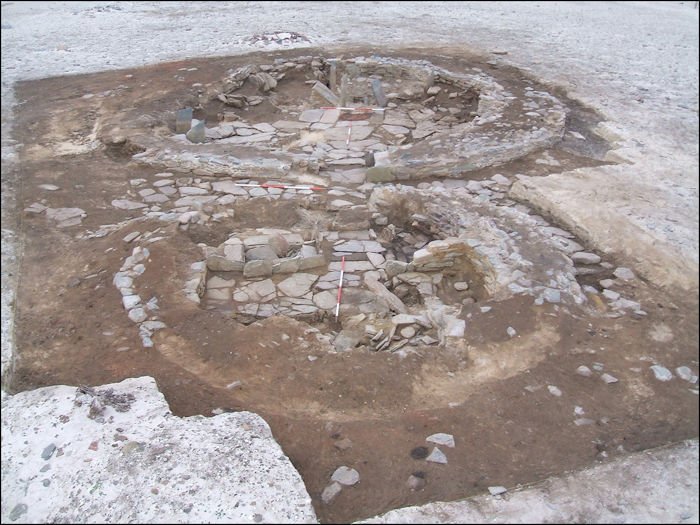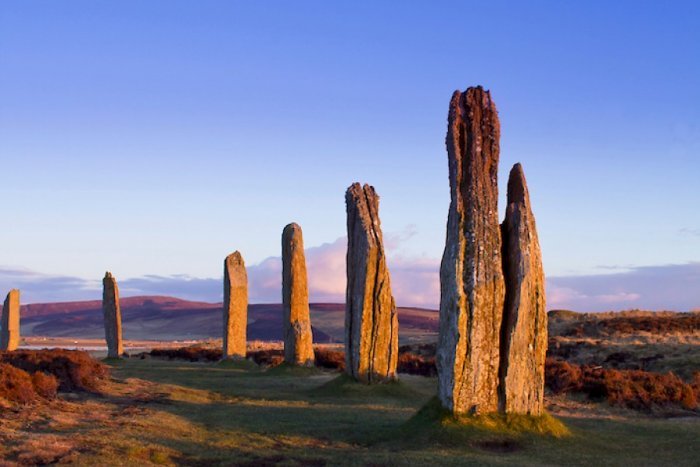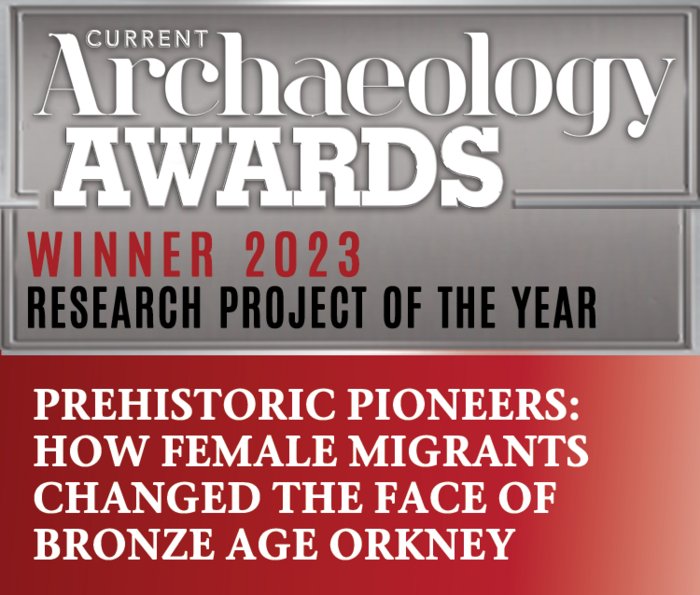Conny Waters – AncientPages.com – A new study of great importance sheds vivid light on pioneering female migrants who made their way to Orkney during the Bronze Age revolutionary investigation.

Paired buildings at Noltland. Credit: EASE Archaeology via the Antiquity
A team of researchers, including Maeve McCormick and Máiréad Ni Challanáin, both of EASE Archaeology, has won Research Project of the Year at the prestigious Current Archaeology Awards for 2023.
The project – a collaboration between EASE Archaeology and the University of Huddersfield – focused on human remains excavated at the Links of Noltland, a Bronze Age cemetery on the island of Westray. This work revealed the first concrete evidence of a major influx of non-local people into Orkney during the Bronze Age – and, significantly, it appears that women dominated this migration.
“Orkney was a major cultural center during the Neolithic, 3800 to 2500 BC. Farming flourished, permanent stone settlements and chambered tombs were constructed, and long-range contacts were sustained,” researchers write in their paper.

Ring of Brodgar – Image credit: Visit Orkney
From ∼3200 BC, the number, density, and extravagance of settlements increased, and new ceremonial monuments and ceramic styles, possibly originating in Orkney, spread across Britain and Ireland. By ∼2800 BC, this phenomenon was waning, although Neolithic traditions persisted to at least 2500 BC. Unlike elsewhere in Britain, there is little material evidence to suggest a Beaker presence, suggesting that Orkney may have developed along an insular trajectory during the second millennium BC.
“We tested this by comparing new genomic evidence from 22 Bronze Age and 3 Iron Age burials in northwest Orkney with Neolithic burials from across the archipelago. We identified signals of inward migration on a scale unsuspected from the archaeological record: As elsewhere in Bronze Age Britain, much of the population displayed significant genome-wide ancestry deriving ultimately from the Pontic-Caspian Steppe.

The project – a collaboration between EASE Archaeology and the University of Huddersfield – focused on human remains excavated at the Links of Noltland, a Bronze Age cemetery on the island of Westray. This work revealed the first concrete evidence of a major influx of non-local people into Orkney during the Bronze Age – and, significantly, it appears that this migration was dominated by women. Image credit: Current Archaeology and the University of Huddersfield
“However, uniquely in northern and central Europe, most of the male lineages were inherited from the local Neolithic. This suggests that some male descendants of Neolithic Orkney may have remained distinct well into the Bronze Age, although there are signs that this had dwindled by the Iron Age.”
It was previously thought that Orkney had become more insular and less influential as the archipelago entered the Bronze Age.
However, ancient DNA analysis of human skeletons from the Links of Noltland revealed that there had been a substantial replacement of Westray’s population between the late Neolithic and early Bronze Age.
Orkney is renowned for its spectacular Neolithic monuments.
See also:
Ancient DNA Study Reveals Surprise About Britain’s Bronze Age – What Happened On The Orkney Islands?
More than that, while similar waves of Bronze Age migration seen across Europe are thought to have been led by men, in Orkney the incomers were predominantly women.
‘We are overwhelmed and delighted to accept this award on behalf of EASE Archaeology and the University of Huddersfield, it is an honour and an acknowledgement of everyone’s hard work, particularly during Covid,’ said Maeve McCormick and Máiréad Ni Challanáin, both of EASE Archaeology, accepting the award on behalf of the project team.
Paper – Ancient DNA at the edge of the world: Continental immigration and the persistence of Neolithic male lineages in Bronze Age Orkney
Written by Conny Waters – AncientPages.com Staff Writer





